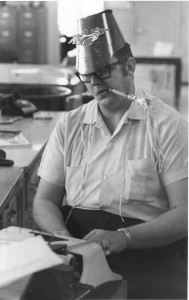Over the years, the SouthWest Sage newsletter has been more than just a calendar of events and clearinghouse for publishing opportunities. The SouthWest Sage has shared advice, support, encouragement, prose, poetry, and reflections on the craft of writing in all genres, by and for the hundreds of members in its ranks. It has served as a platform for its myriad of authors to share with each other, and the greater world, their unique, authorial messages.
To celebrate the scope and achievements of these storytellers, SouthWest Writers has chosen to produce a trio of anthologies showcasing the best in prose, poetry and—in a peek behind the curtain to see the mechanics behind the magic—reflections on the craft. Team leader, Allen Herring 3, along with Dan Wetmore gathered stories for this inaugural volume, from issues of the SouthWest Sage’s dating back to 2018. The cover art was provided from the archives of photographer Rosa Armijo-Pemble.
The first anthology contains prose. Kaleidoscope, was released in November of 2024 and is now available on Amazon. The next anthology will feature poetry and is scheduled for release in the summer of 2025. The last of the trio focuses on articles written about the craft of writing. It will be released in early 2026.
Inside the first anthology, you’ll find musings to inspire and delight; stories written to challenge and entertain; tales from outer space and the inner heart. Each of these selections gives a unique insight into the voice of its author. All of the stories are short, easy reads in a large variety of themes. Stories have been grouped by subject or prompt, offering variations on a theme. The responses are by turns humorous, poignant, matter-of-fact, even counter-intuitive. Many are all of those things. So grab a cup of your favorite drink, sit back, and enjoy some of the voices from inside SouthWest Writers.
You can get copies of Kaleidoscope from the SouthWest Writers Office or through Amazon.
Table of Challenges
Challenge: A Desert Story
An Evening at Shiprock – Stan Rhine
Challenge: Who is a Sage
Tiger – Patricia Walkow
Desert Towers – Michele Buchanan
Challenge: Short Horror/Fantasy Tale
Weevil – Stan Rhine
Day of the Dead – Patricia Walkow
A Very Beary Summer – Evelyn Neil
Challenge: Travel Memoir
Write It! – Elaine Montague
What an Arrival in Hong Kong! – Carol Kreis
Challenge: The Terrible Horrible No Good Very Bad Day
Chrome – Stan Rhine
Snowbound in Rural Magdalena – Ruth Hamilton
A Grand Adventure – Molly McGinnis Houston
A Delivery for Buddy Malone – Nathan McKenzie
Challenge: Retirement Story about an SWW Stalwart
A Brief Biography of Larry Greenly’s Younger Years
Dawn Weenow & R. Gaye Aparrell
Challenge: Story Begins “This was not supposed to happen
Altar Altercation – Mary Therese Ellingwood
Challenge: story where botanical plan an important part
Mr. Howard’s Roses – Patricia Walkow
In My Garden – S.A. Montoya
The Flower Ladies of Lovell – Bud Vhase
Twirl with Grace – Elaine Montague
Challenge: The Long and the Short of it.
Roots and Branches – Lynn Andrepont
When Shit Hit the Fan – Rose Marie Kern
Challenge: Thank You For Your Service
Thank You For Your Service – Jim Tritten
Challenge: A Boy and His Frog
A Boy and His Frog – Léonie Rosenstiel
A Boy and His Frog – Jasmine Tritten
Challenge: Include the words: cowbell, wheel, cobalt
My Chevy Cobalt & The Cowbell – Léonie Rosenstiel
Challenge: Sci Fi/Fantasy about a Holiday
Explorers’ Day – Léonie Rosenstiel
Challenge: Include “The carpet wore a floral pattern”
It’s Coming Along Fine – Neil Elliott
Light Illuminating – Brenda Cole
The Carpet Wore a Floral Pattern – Léonie Rosenstiel
The Photographer – Kathy Louise Schuit
Challenge: Fill in blanks: Dear Arther, I love…more than…
What should I do? And provide an answer.
Dear Arthur – Sandra B. Hoover
Dear Arthur – Jim Tritten
Dear Arthur – Chris Allen
Dear Arthur – Patricia Walkow
Dear Arthur – Léonie Rosenstiel
Challenge: Memoir
Mickey and Me – Joe Brown
Mission – John Hoover
Sentimental Journey – Annette Thies
Beauty and the Nerds – Bob Moslow
Rosie the Riveter – Sam Moorman
The Milk-Bone Dance – Rose Marie Kern
Finding Myself on the River Amazon – Mary Candace Mize
Challenge: Memoir: An apocalyptic, third person tale
The Bottomless Cup – Jane Epstein
Mom’s Fishy Revenge – Brenda Cole
Challenge: File your report with the Temporal Irrelevance Mission Engineers (TIME) Commission
Meetup in the Bermuda Triangle – Jim Tritten
Modern Dating – Sam Moorman
The Gibraltar Assignment – Rose Marie Kern
From Right And Left:A Very Short Memoir – Roger Floyd
Challenge: Share insights gleaned during Covid isolation which improved some aspect of your writing
Posture is Everything – Sam Moorman
Dashikis – Joyce Trainor
Paris When it Trickled – Jasmine Tritten
Challenge: You are stranded on a desert island, write your message in a bottle
Caught! – Elaine Montague
Challenge: Begin a story with “It started with a clatter”
It Started With a Clatter – Kathy Louise Schuit
A Few New Things – Su Lierz
Picture of a Lifetime – Molly McGinnis Houston
Challenge: Tell us how you got your name.
A Rose by Any Other Name – Rose Kern
The Name Game – Barb Simmons
A Different Kind of Girl – Brenda Cole
Ruminations On My Name – Léonie Rosenstiel
K-K-K-Katie – Kathy Louise Shuit
Who’s In a Name? – Daniel Russell Wetmore
Road Home – Lynn Andrepont
Challenge: Hang your story on an aroma, smell, or scent
The Scent of Rabbit – Joanne S. Bodin
Choucroute Garnie – Léonie Rosenstiel
A Winter Fragrance, Long Remembered – Lynn Andrepont
Challenge: One night as the opening act for a famous rock band
Last Note – Ed Johnson
Challenge: Mystery of someone locked in a candle factory
The Abduction – RH Marshall
Challenge: A story containing a supernatural being
The Haunted Mirror – Alane Brown
The Cousins – RH Marshall
Angel Hawk and the Ancient Ancestors – Rose Marie Kern
Challenge: As a fly on the wall in Santa’s reindeer barn a week before Christmas, describe what’s happening
Santa’s Meeting Christmas, 2005 – Heidi Marshall
The Situation – Kathy Louise Schuit
Challenge: A story that happened on a Monday
Oh! THAT Monday... – M. Elder Hays
Challenge: Write a SciFi/Fantasy Love Story
Yabegan Love Games – Lezlie Schreiber
Interstellar Opus – Rose Marie Kern
The Lonely – Susan Cooper
Challenge: Include a jangly silver bracelet
Jewelry Heist – M. Elder Hays
Inheritance – Mary Therese Ellingwood
Challenge: Include rain after months of drought
The Tourists – Cornelia Gamlem
Challenge: An unusual animal encounter
Does the Snake Know? – Patricia Walkow
I Almost Became A Meal – Elaine Montague
Mr. Snake – Léonie Rosenstiel
The Thunderbird – Lu Evans
Challenge: Describe a color to a person unable to see
The Color of You – RH Marshall
Glimball – Kathy Louise Schuit
Orange You Glad – -Allen Herring 3
Challenge: Story about an insect in December
Little Brother and the Injured Bug – Lynn Andrepont
Bugged No More – Sam Moorman
The Life in a Day – Dan Wetmore
Challenge: A swimming adventure in January
Swimming For Shore – RH Marshall
Challenge: Include the tinkle of ice cubes
Impossible – RH Marshall
She – Ed Lehner
A Meeting of Minds – Brenda Wolfenbarger
Challenge: Story containing March (month) and march (verb)
The Promise – Ruth Vogel Mast
Scale the Scar, Heal the Mountain – Dan Wetmore
My Raccoon – Carol Kreis
And We Marched – Lezlie Schreiber
Challenge: Tell us a time when you laughed till you cried
Multitasking – Chris Allen
Blowing Kisses – Barb Simmons
Killer Canasta – Rose Marie Kern
Challenge: A description of someone eating a habanero chile
El Pimiento del Diablo – David Harris
Tourist – Kathy Louise Schuit
Selfie – Ruth Vogel Mast
Challenge: A story about depositing Earth’s trash on Mars
Seeing Red – Dan Wetmore
Down in the Dumps – Allen Herring 3
Yo-ho-ho, Cayden! – Mary Therese Ellingwood
Challenge: A story suitable for a Young Child
Lost and Found – Sam Moorman
Challenge: Tell us about having something confiscated
Stabbing Myself in the Back – Rose Marie Kern




 The entry form below must be filled out and emailed to the SWW office prior to October 20, 2024. You can copy the text and drop it into an email or Word document or use the .pdf version.
The entry form below must be filled out and emailed to the SWW office prior to October 20, 2024. You can copy the text and drop it into an email or Word document or use the .pdf version. The New Mexico State Poetry Society is scrutinizing our Free Verse, Limerick and Haiku categories. Shirley Blackwell, current Chancellor of the group, is coordinating the efforts of experts in each of those categories. NMSPS was founded in 1969. They are a non-profit poetry organization affiliated with the National Federation of State Poetry Societies, Inc. (NFSPS). Their mission is to promote the creation and appreciation of poetry throughout New Mexico. “We are a diverse and inclusive community of poetry aficionados whose collective purpose is literary and educational, with a good dose of fun thrown in.”
The New Mexico State Poetry Society is scrutinizing our Free Verse, Limerick and Haiku categories. Shirley Blackwell, current Chancellor of the group, is coordinating the efforts of experts in each of those categories. NMSPS was founded in 1969. They are a non-profit poetry organization affiliated with the National Federation of State Poetry Societies, Inc. (NFSPS). Their mission is to promote the creation and appreciation of poetry throughout New Mexico. “We are a diverse and inclusive community of poetry aficionados whose collective purpose is literary and educational, with a good dose of fun thrown in.” produce quality stories for young people. Their local chapter here in New Mexico is an excellent resource for new authors. Award winning author, Chris Eboch, has spoken for SWW on several occasions, and is coordinating the organizations participation with our writing contest.
produce quality stories for young people. Their local chapter here in New Mexico is an excellent resource for new authors. Award winning author, Chris Eboch, has spoken for SWW on several occasions, and is coordinating the organizations participation with our writing contest.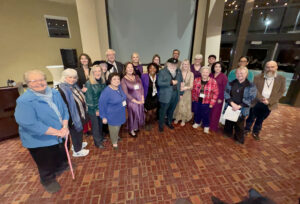
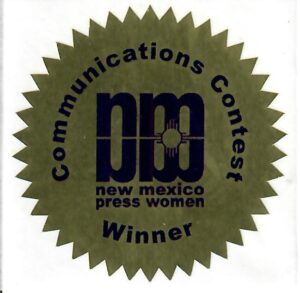
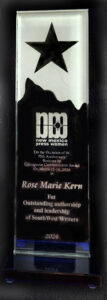
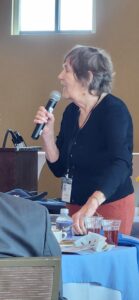
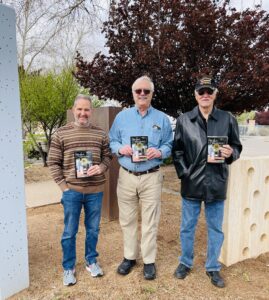
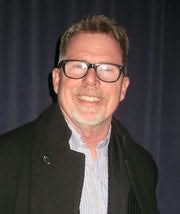
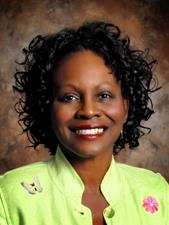
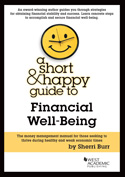
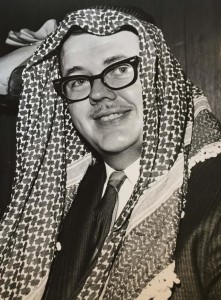
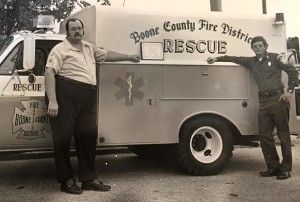 Nonetheless, the writer can take some reasonable liberties with a memoir. Memoir, after all, derives from a French word meaning memory. So you’re drawing on your memories when you write a memoir. Yet many memoirs reproduce conversations of years gone by. Are they verbatim transcriptions that the writer is reproducing? Not likely. The reader should understand that the writer has reconstructed the events as he or she remembers them. In fact, a note early in the book might remind the reader that the writer is depending on memories to tell the story.
Nonetheless, the writer can take some reasonable liberties with a memoir. Memoir, after all, derives from a French word meaning memory. So you’re drawing on your memories when you write a memoir. Yet many memoirs reproduce conversations of years gone by. Are they verbatim transcriptions that the writer is reproducing? Not likely. The reader should understand that the writer has reconstructed the events as he or she remembers them. In fact, a note early in the book might remind the reader that the writer is depending on memories to tell the story.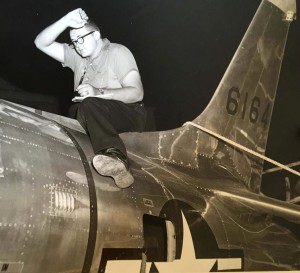 a speck in the ocean when you are flying thousands of feet above it and planning to land on the flight deck below. The carrier is not parked at sea when a pilot is trying to land. The ship is underway, rolling and pitching with the waves and the actions of the sea, plus it is steaming into the wind to grant the airplane extra lift as it makes its precarious landing.
a speck in the ocean when you are flying thousands of feet above it and planning to land on the flight deck below. The carrier is not parked at sea when a pilot is trying to land. The ship is underway, rolling and pitching with the waves and the actions of the sea, plus it is steaming into the wind to grant the airplane extra lift as it makes its precarious landing.